The history of how Scotland brought golf to America
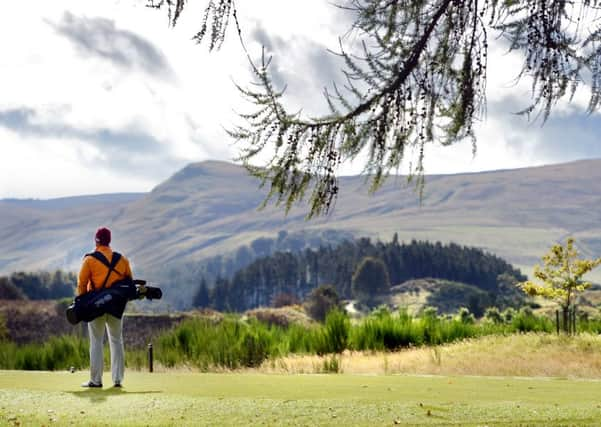

As a young man, Reid had left his native Dunfermline and had come to New York, as his famous townsman had, only Reid, unlike Andrew Carnegie, was not in the throes of creating an empire at the time. An executive position with an ironworks company in the city was as good as it got for him.
But, as soon as that box landed, as soon as he delved in and lifted out his brassie and his spoon and his cleek, Reid did not have a single complaint in the whole wide world.
Advertisement
Hide AdAdvertisement
Hide AdThe goods were quality. Many months before, they’d been shipped from Scotland, from the shop of Old Tom Morris himself, so Reid knew what he was getting was nothing but the finest equipment.
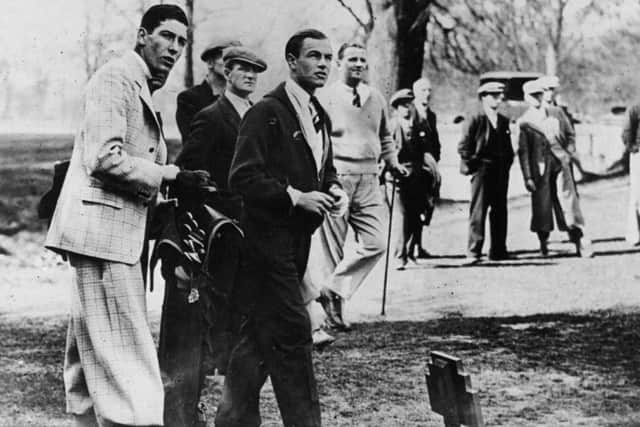

It was the morning of February 22, 1888, and though all of America was celebrating George Washington’s birthday, Reid had other plans.
He told his friends to meet him on the old cow pasture across from where he lived. On that historic day, three golf holes, about 100 yards long, were laid out over the bumpy terrain and cups were dug up from the ground with the head of a cleek. Golf had finally come to America.
Later in the year, at a dinner in Yonkers, the first permanent golf club in the United States was formed, with Reid at the helm. They called themselves the St Andrew’s club, but with an apostrophe inserted to avoid confusion with the place back home.
Reid’s crew led a nomadic existence, moving from the cow pasture to the north east corner of Broadway, to an orchard on the Weston estate about a quarter of a mile from their old course. They pitched a tent under the shade of an apple tree and called it a clubhouse.
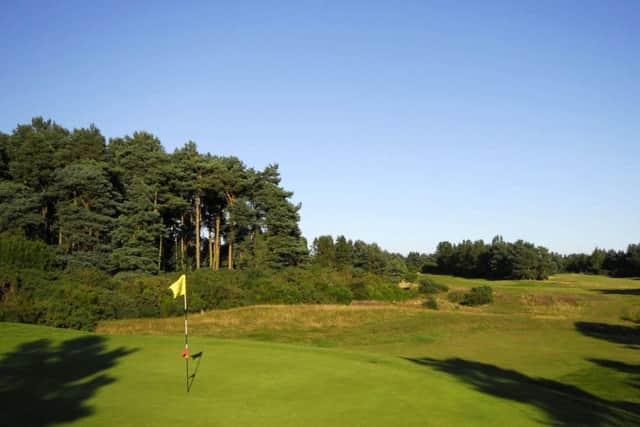

Forever more, these men would be known as the Apple Tree Gang, with Reid, of humble Fife stock, to this day being remembered as the father of American golf.
If Reid kick-started a love of the game in the new world then he had a supporting cast of hundreds, if not thousands, of pioneering Scots.
Advertisement
Hide AdAdvertisement
Hide AdThere are many you will never know about; club pros who came in from the four corners of their homeland and eked out honest livings for themselves and their families. At the other end of the spectrum, the stars hung out. Willie Anderson, an intensely private man from North Berwick, won four of the first five US Opens at the beginning of the 1900s, claiming three in row from 1903, a record that has never been matched.
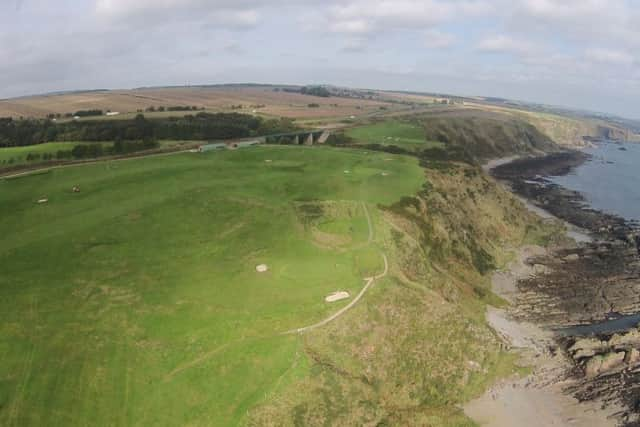

Only Laurie Auchterlonie denied him the distinction of five in a row, the St Andrews player winning his first and only championship at Garden City, New York, in 1902.
Many of the greats, professional and amateur, had Scots behind them, from Bobby Jones and Francis Ouimet to Gene Sarazen and Walter Hagen. A Scottish accent was a passport to a better world. If you were from North Berwick or Musselburgh, St Andrews or Carnoustie, you had a standing in the golf world.
If you weren’t a celebrity then you could easily mix with one and not get out of your depth. Musselburgh’s Willie Dunn arrived in the States in 1891 and in time he would count John D Rockefeller, John L Sullivan and Buffalo Bill Cody as mates and Teddy Roosevelt and WK Vanderbilt as students.
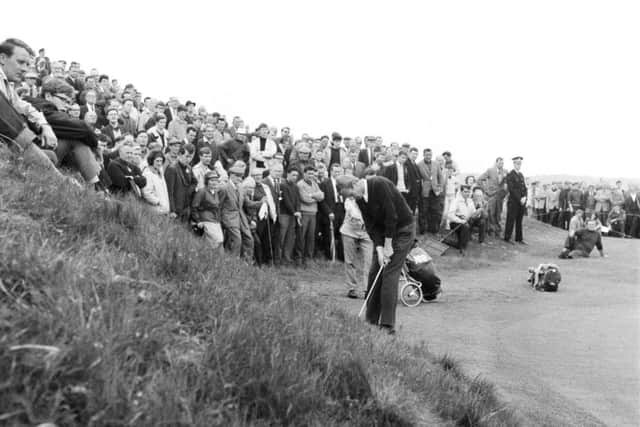

World and business leaders, sports and film stars and even royalty and the occasional prairie scout from the Wild West wanted a piece of wisdom from the old country to help improve their game. And there was certainly no shortage of it
The writer Herbert Warren Wind said that Scottish golfers had, in that period, become “as permanent in the American scene as Swedish masseurs and Chinese laundrymen”. They had taken over, completely.
NEW JERSEY
In New Jersey you will find the headquarters of the United States Golf Association. More than 20,000 books line the shelves of their research library, alongside complete or near-complete runs of every golf magazine there has ever been, more than half a million photographs and several thousand hours of footage.
It’s not big, it’s mammoth. And a chunk of it belongs to Scotland.
Advertisement
Hide AdAdvertisement
Hide AdIn every cabinet there is some file or other detailing the heroics of a pioneering Scot, every account of the rise of golf in America being traced back to John Reid and the migrants who came in his wake. They arrived on their own, in pairs and as whole families.
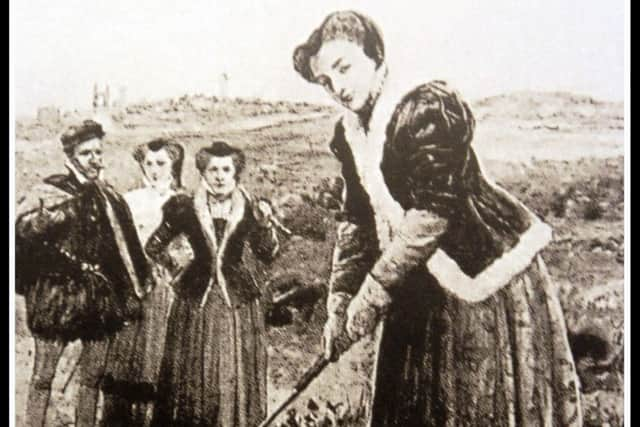

One of the first to make the move was Tom Anderson, who brought his two sons with him, Tom Jnr and Willie, who became the first great player America had ever seen.
Next there was Willie Dunn. His first act was to set about transforming nearly 4,000 acres along Great Peconic Bay in New York State into America’s first sophisticated golf course.
With the help of 150 Indians from a nearby plantation, Dunn created a 12-hole wonder - the original Shinnecock Hills. When he’d finished he immediately sent for his two nephews, Seymour and John, and that was the way it worked, relation funding relation and friend funding friend on the expensive passage across the sea.
There were the Hutchisons and the Mackies, the Campbells, the Dows, the Jollys and the Foulis boys from St Andrews. The Smiths from Carnoustie were brought up down the road and related through marriage to the Maidens, Stewart and Jimmy. Stewart, or “Kiltie” as they called him in America, played off a handicap of plus one and was a tremendous golfer. His place in history, though, is not recorded through tournaments won or anything he himself achieved in battle. Rather, he is remembered and written about in books, as the inspiration, the guiding light in the career of the man some still tell you was the finest golfer and one of the greatest gentlemen who ever swung a club. Kiltie taught Bobby Jones how to play.
From its unofficial inception in 1894, when Willie Dunn beat Willie Davis and Willie Campbell, and all of America began to believe that unless your name was Willie and you were a Scot then you had no chance of succeeding at golf, the US Open had largely been a meeting of the clans. They came together and spoke about home and about their experiences in their own corners of America, as players, designers, teachers and the makers of balls and clubs. Seventy two holes of medal play was the highlight of these gatherings and the $300 prize fund was a mighty reward given the times in which they lived.
DONALD ROSS WAS THE WORKING CLASS SON of a stonemason, apprenticed to a carpenter and inspired by an icon. From an early age, all he ever wanted to do was play golf and in that regard he could not have had a finer teacher for the man who gave him his grounding in the game was Old Tom Morris, the sage of St Andrews. From the age of 18 until he turned 20 and returned to Dornoch as the resident pro, Ross hung on every word that ever came out of Tom’s mouth, devouring his thoughts on greenkeeping and clubmaking and the construction of a proper golf course.
Dornoch was a town popular with Americans but with one American in particular. Robert Wilson was a professor of astronomy at Harvard University who wanted nothing more out of life than to play golf in Scotland all his days. Over the years, he befriended Ross and they would talk about the game and the possibilities that existed for a player of his talent in the new world. They came to an arrangement; if Ross ever decided to emigrate then Wilson would get him work.
Advertisement
Hide AdAdvertisement
Hide AdAt the turn of the millennium, 1899, Donald made the most momentous journey of his life. With $2 in his pocket he sailed into New York harbour on a mail freight and then boarded a train bound for Massachusetts. Eight miles short of Wilson’s home in the town of Cambridge he got to get off, $2 only taking him so far down the track. Forced to walk the rest of the way through the snow, suitcase in his hand, golf bag over his shoulder, how can anyone have known that this forlorn figure would soon become one of the most distinguished names in American golf?
Wilson installed Ross at Oakley Country Club, a rudimentary course near Cambridge that had designs on being something grander. As a designer, Ross loved bunkers and hated water unless it was whipping in on the breeze from the sea. It was not uncommon for his 1920s creations to have 200-plus bunkers. He believed in strategic golf, hard but fair. Think your way around or suffer the consequences. Nothing is supposed to come easy on a Ross course.
He made $60 a month as the professional in charge of revolutionising Oakley’s bland layout - which he did - and earned 55 cents a lesson from the members. As the game began to catch fire in the States, business proved brisk. “He gained so many followers,” wrote another biographer, “that he laboured frequently to the point of exhaustion.”
As a professional, Ross won the prestigious North and South Open three times between 1903 and 1906 and won the Massachusetts Open in 1905 and 1911. He played in seven US Opens and was fifth in 1903 but solid and all as he was as a ball striker he wasn’t in the same class as his younger brother. Alex Ross had joined Donald in America and in 1907, he won the US Open, the latest in a line of transplanted Scots who dominated the national competition in the early part of the century.
Donald was never going to play as well as Alex but his ambition had changed in any case. Playing for a living didn’t have the same appeal any longer, not after he set foot in Pinehurst for the first time. One day, while teaching at Oakley, Ross got talking to one of his pupils, a high-powered attorney who represented some serious operators in the business world. One such figure was a man by the name of James Tufts, the founder of the Pinehurst resort in the sandhills of North Carolina. At the time Tufts and his son, Leonard, were engaged in a disagreement about the future of golf, one saying it was nothing but a passing fad and a waste of money, the other catching a clearer vision of the game’s future. Vision won the argument.
The Scot was put in touch with Tufts and a relationship of huge significance was born. He got to work at Pinehurst in 1901, designing and rebuilding four of the five courses on the complex, none with more attention to detail than on No.2 where the US Open will be staged this week. From the beginning it was a mighty struggle. One newspaper later wrote about the problems Ross faced in those early years. “Imagine, if you can, a contractor employed to build a house, who can find no workmen who have ever worked on a house before and you will have some idea of what it meant to be the first golf architect in America.”
Ross, and his team of novices, took two years to build nine holes and then another four years to complete the 18 but that was just the start of it. It wasn’t until 1935 that he finally declared his masterpiece finished. He called it “a chess player’s course where the placement of every shot opens or closes the way for the following shot and determines the varying ways a shot must be shot.” Others simply called it - and still call it - one of the game’s greatest venues.
When he completed his work in the October he wrote to his daughter, Lillian, from his old cottage behind the 3rd green of his new creation. “The golf course is just grand,” he said. “It is, I think, the best job I ever did and will always be a monument to your dad.”
Advertisement
Hide AdAdvertisement
Hide AdBut behind the faade of one of golf’s great achievers there was a man who had suffered a lot of hardship in his private life. Lillian’s parents met before her father ever set sail for America, Donald promising Janet Conchie, a nurse from Dumfriesshire, that he would return for her one day. It took him five years but return he did and on June 9, 1904 they were married.
Lillian came along five years later but in the spring of 1922, not long after walking in off the golf course, Janet died suddenly from a heart attack, aged 55. In the act of getting over the death of his wife, Donald grew close to a family friend, a woman called Susan Aldridge whom Lillian simply knew as Aunt Susie. In May of 1923 they announced their engagement. By August, Susie was dead from cancer.
The following spring, while immersing himself in work at Pinehurst, Ross was asked to negotiate with a nearby landowner who wished to extend her property a few feet into the back of the third hole on the No.2 course. The owner was Florence Blackinton, widowed two years earlier. Romance bloomed for a third time and on November 7, 1924, Donald and Florence were married and lived the rest of their days in that white brick cottage, named Dornoch.
BY THE TIME THE WALL STREET CRASH OF October, 1929 triggered the Great Depression around America and the wider world, Ross’s once mighty empire had become a much leaner organisation, employing dozens of people rather than the thousands of before. Even those smaller numbers would reduce as the years went by.
Ross made his last visit to Scotland a year before the Depression partly because his work no longer required him going there but also because his new wife had a terrible problem with boats. She couldn’t stand a voyage of that length and so they never went. He lived out the final decades of his life as an American citizen and a proud Republican. While he designed about a dozen courses after Pinehurst No.2 was unveiled to the world in 1935, it was the last of his great works. He was now in his 60s and in the layouts of his feted courses and in many of his other less well-known classics like Worcester (1913), Wannamoisett (1914), Plainfield (1916), Essex (1917) and Salem (1925) he felt he had made his contribution to the history of the game. He didn’t need the money and he never needed the glory, though plenty of it has come his way over the years.
All he wanted out of life now was to live in his cottage and spend days with his family and his dogs and go to the odd college football game, so long as Harvard (the alma mater of his sponsor, Wilson) were playing. He raised money for underprivileged children and tended his garden where he looked after his prized roses with the same dedication he applied to any golf course he ever created. And every week he would write to Lillian.
On March 13, 1948, he told her: “I have two courses to design now on my drawing table but I don’t intend to advertise for any more business. I don’t care to undertake any more work. If I didn’t have to think of the men who depended on me for a living I would never take another job. I have done my share of work. I am quite well aware that my heart is not acting well.”
A little over a month later, on Monday morning, April 26, in his 75th year, Donald suffered a heart attack and at 9.15am at Moore County hospital he passed away. As he was brought to Massachusetts for burial the flags at the Pinehurst resort he put on the world map flew at half-mast.
Advertisement
Hide AdAdvertisement
Hide AdHerb Graffis, the golf writer, wrote of Ross as “one of those gracious, beloved characters out of Scotland with a winning personality.” Bobby Jones and all the greats of his era paid tributes and now, more than half a century after his death, the new generation still know who Donald Ross is and what he was about. In the corners of America where golf is played, he is immortal.